Tap Into The Infinite Power Of Nonprofits
Explore how you can leverage the power of a tax-exempt, grant-funded, public nonprofit to expand your mission, advance education, and improve society while concurrently boosting your goodwill, trust, credibility, authority, influence, and expansion opportunities
I ❤️❤️ NONPROFITS!
Hey, Sid Peddinti here again.
If you are on this page, you might be looking into how you can leverage the power of a public nonprofit to give back to society, and perhaps even wondering how you can use your positioning as a philanthropist to unlock new opportunities for business or personal growth as well.
You are in the right place - leveraging the power of the "tax code", specifically the nonprofit sector to do well while doing good in the world, an approach that's considered "DOUBLE BOTTOM LINE" and adopted by virtually every fortune 500 and even their founders, is our core specialty.
The nonprofit structure is one of the most powerful and flexible entities available. It allows you to pursue a wide range of activities - from educating the public and investing in mission-aligned assets, to issuing grants and donations, and even channeling a portion of your own income into your nonprofit for tax-advantaged charitable or educational initiatives.
Like any entity, it comes with rules and responsibilities, but for those willing to understand and follow them, the opportunities for impact, growth, and tax efficiency are, for lack of a better term, life-changing.
Below is my TEDx Talk on "The Power of Nonprofits", along with several articles where I break down how entrepreneurs and business owners can strategically and tactically leverage nonprofit structures.
Over the past two decades, I’ve dedicated tens of thousands of hours to studying, building, and operating nonprofits - not just from a theoretical standpoint, but from deep, hands-on experience.
I've explored how these entities can be used to drive impact, unlock funding, reduce taxes, build authority, and align purpose with profit. The strategies shared below are the result of that lifelong research and fieldwork.
I'm by no means a "nonprofit guru", but I do know a thing or two about them and how to leverage them, having formed over 5,000 of them for clients, dissolving over 1,000 of them and understanding why they fail, helping clients unlock over $50 million in grants since my TEDx Talk in 2020, and running several nonprofits in various sectors since 2008 - across Canada and the US.
Whether we're the team that can assist you or not - I hope you leave inspired, encouraged, and motivated to BECOME A PHILANTHROPIST™ and operate through nonprofits.
Review the content, view the videos we've attached, fill out a short application form, and schedule a call to get deeper into these strategies with us. Talk soon.
~ Sid Peddinti

TEDx Talk On Philanthropy
Leveraging Philanthropy
Entrepreneur Article On Nonprofits

High-Level Overview Of Public Nonprofits
About Nonprofits: A High-Level Overview
Public nonprofits, typically registered as 501(c)(3) organizations under U.S. tax law, are powerful tools for individuals, entrepreneurs, and institutions to create societal change, receive tax-advantaged donations, and build lasting legacies through education, innovation, and philanthropy.
Early Philanthropy:
Influenced by 19th-century industrialists like Andrew Carnegie, who advocated that the wealthy should distribute surplus wealth in ways that promote the welfare and happiness of the common man.
Carnegie’s “Gospel of Wealth” became the philosophical cornerstone for modern philanthropy, promoting libraries, schools, and scientific research through structured giving.
Links to the Gospel of Wealth available at the bottom of the page. I HIGHLY recommend reading it - it'll reshape the way you think about our role in society, how the tax code is structured, and how the wealthy operate.
Legal Foundation:
The Revenue Act of 1917 first allowed tax deductions for charitable contributions.
Senator Hollis was one of the drivers behind this act and argued that people will donate more to charity if we incentivize them with tax breaks, and 100% of the funds could go to the intended charitable purpose than if it were to go through the government's bureaucratic system where only 5%, 10%, or 15% would end up reaching the intended charity.
Section 501(c)(3) of the Internal Revenue Code, established in 1954, formally created the nonprofit exemption structure used today.
Legal Status: 501(c)(3) Definition: A section of the IRS code granting federal tax exemption to organizations operating exclusively for religious, charitable, scientific, educational, or literary purposes.
Key Characteristics:
Must serve the public good.
Cannot distribute profits to private shareholders or individuals.
Donations are tax-deductible for donors.
Subject to public disclosure, such as annual Form 990 filings.
No owners or shareholders, just board members
Generally 3 Members are required with independent parties on board
Can operate in perpetuity, but must stay in compliance
Assets and donations in the nonprofit are not subject to income, capital gains, corporate, gift, estate, inheritance or death taxes
Types of 501(c)(3)s:
Public Charities: (discussed on this page)
Funded by multiple sources (individuals, government, corporations, foundations, trusts/estates)
Engaged in direct charitable work
Can invest, employ people, conduct "active" public-facing business activities, and engage in charitable work
No distribution requirements
3 members required, 1 must be an independent party (no blood relation to the other members - can be friends/business partners/etc.)
No income tax, capital gains, inheritance, corporate, gift, estate tax, or probate costs
Private Foundations: (discussed on the "foundations" page)
Funded by one source (family or corporation)
Engaged in investing and portfolio diversification
Not public facing - supports public nonprofits through grants and donations
Can invest in assets, employ people, conduct "passive" business activities (investment related), and engage in charitable work
Required to distribute 5% of fund to public nonprofits every year (example: corporate grants to public nonprofits)
3 members required, no independent or outside parties required (you can control everything as a family)
No income tax, capital gains, inheritance, corporate, gift, estate tax, or probate costs
Investment income faces a 1.39% flat-tax (excise tax)
Strategic, Innovative, and Creative Ways To Leverage The Power Of Public Nonprofit Education Centers
A few tips before you walk through these examples and strategies:
1. Core belief: We all possess a "mini-university or e-learning center" in us (think of all your stories, insights, ideas, expertise, experiences, education, wins/losses, and all the things you have picked up on your journey so far) - this is the "IP" in you.
2. Our intellectual property can change lives, empower people, and uplift humanity in some way, shape, of form.
3. We are the real brains behind the business and have the ability to lead a movement, disrupt an industry, and empower millions of lives
Think of the "nonprofit education center" as an "extension of your brain".
Ask yourself:
Can you repurpose what's in you to benefit society and uplift humanity?
Can you extract and package your intellectual knowledge in a way that can be used for decades or centuries - well past your life?
What's the "real value" of your IP beyond just the monetary value - where does your "inherited and acquired intelligence and wisdom" fit into the grand scheme of social and humanitarian progress OR is the value of your IP only in one form: your current services to customers in exchange for the fees you charge?
If so, would you be open to partnering with the world's largest companies who are also on that mission to advance humanity and would love to fund your mission and help you "do well and do good" by powering your public education nonprofit center?
If the answer is "YES", envision yourself running a nonprofit education center, a mini-university, an industry-leading e-learning center and leveraging the following strategies:
Educate the marketplace with free advertising dollars from various corporate foundations
Examples:
A Trademark and Business Lawyer creates a series of business, trademark, and IP courses, programs, blogs, and a podcast that is hosted and shared through a nonprofit education center they established.
The nonprofit receives $120,000/year in Google Ad credits, $100,000 in Amazon Ad credits, and another $30,000 from Bing, which are used to promote free educational workshops and pro bono consultations for startups and founders. These are resources the lawyer was already offering - now backed by funding, trust, and a strong humanitarian mission.
There is no direct promotion of the law firm, but the free exposure, goodwill, the boost in visibility, the elevation in the attorney's image as an educator, researcher, teacher, trainer, and attorney on a mission to fight scams, empower the public, and protect consumers is "priceless" - the intangible benefits from gaining recognition through your double bottom-line approach sets you apart from virtually all your competitors.
Convert "freeloaders" and freebie-seekers into pro-bono recipients
Convert "freeloaders" and freebie-seekers into pro-bono session recipients
Example:
A Therapist frequently receives requests for free sessions. Instead of turning them away or draining their time, they create a nonprofit that offers free weekly trauma and healing workshops.
The program is supported by wellness grants, hospital sponsorships, and corporate donors interested in mental health initiatives.
Now, the therapist no longer deals with freeloaders - every “free” participant becomes part of a funded pro bono program, increasing impact, reducing burnout, and elevating professional authority.
Collaborate legally with professionals outside your license through education
Collaborate legally with professionals outside your license through education
Example: An Estate Planning Attorney partners with a CPA and financial planner to deliver a nonprofit-hosted workshop series on generational wealth, tax planning, and legacy building.
Because it’s an educational program under a public nonprofit, there’s no legal conflict or fee-splitting issues that they would face in a traditional business-referral setting - it’s a mission-driven collaboration, not just a close-knit group of experts working together.
The result is multi-professional synergy, shared audiences, and an ethical, compliant pathway to offer joint value while growing referral pipelines - all founded on educating and empowering people so they can make the right decisions while avoiding scams & fraud.
Enter untapped communities by showing up as a teacher, not a salesperson
Enter untapped communities by showing up as a teacher, not a salesperson
A Real Estate Agent forms a nonprofit to educate first-time buyers, single parents, and immigrants about credit, financing, and homeownership.
Through bank partnerships and housing authority grants, the agent offers free classes and materials - earning trust in skeptical or underserved markets that are full of scammers and fraudsters.
This philanthropic education model not only builds goodwill - it converts cold communities into warm, ready leads without the hard sell. Build good work, and the rewards will automatically follow.
Sponsor your own events to attract collaborators and bigger partners
Sponsor your own events to attract collaborators and bigger partners
A Fitness Coach launches a nonprofit that hosts community wellness fairs and school-based fitness initiatives.
Local hospitals, insurance companies, and health brands jump in as co-sponsors, seeing alignment with their CSR and ESG goals.
This boosts visibility, creates media-worthy partnerships, and gives the coach a much broader platform than any ad campaign could achieve.
Establish thought leadership through published education - not promotion or "FOMO-based" tactics
Establish thought leadership through published education - not promotion or "FOMO-based" tactics
Example: A Financial Advisor forms a nonprofit focused on teaching estate planning, tax-free investing, and financial literacy.
They host webinars, publish educational articles, and license curriculum to local schools and employers - all grant-eligible and free of the traditional marketing rules that they would face under their for-profit business.
This strategy transforms them from “just another advisor” into a recognized financial educator and community asset - opening the door to high-trust relationships.
Now, keep in mind, there are still rules and regulations in relation to advertising and marketing, and some "licensed professionals or government employees" (as an example) may still be required to "disclose" their participation in a nonprofit, but that does not change or alter your ability to explore all the use-cases described on this page.
Access schools, corporations, and government through collaborative programming
Access schools, corporations, and government through collaborative programming
Example: An AI Instructor launches a nonprofit to teach underserved students the basics of data science and machine learning.
They receive partnerships from public schools, tech companies, and city innovation departments.
As a nonprofit, they become eligible for federal and state education grants - and now have a direct line into institutions that typically avoid for-profit vendors.
Test new ideas and launch impact ventures with tax-free status
Test new ideas and launch impact ventures with tax-free status
Example: A Sustainability Consultant launches a nonprofit focused on converting abandoned spaces into urban gardens.
They receive grant funding, real estate donations, and corporate support to test sustainable living prototypes and job-training programs.
All revenue generated through aligned services (like tours, merch, or training fees) is mission-aligned and tax-exempt - giving them a lab for innovation without financial strain.
Offer scholarships, contests, and awards to generate buzz and goodwill
Offer scholarships, contests, and awards to generate buzz and goodwill
Example: A Photographer creates a nonprofit offering youth photo scholarships and community art contests.
The nonprofit secures funding from local arts councils and camera companies, and hosts exhibitions that get covered in local press.
In the process, the photographer earns community loyalty and widespread exposure, while supporting the next generation of talent.
Repackage your services as nonprofit educational products
Repackage your services as nonprofit educational products
Example: A SaaS Founder with a digital training app builds a nonprofit to teach workforce development in underserved communities.
They offer the app for free via grants and nonprofits, then license the same tech to schools and companies under a mission-driven agreement.
The product is now viewed as a social innovation tool, not just software—attracting funders, governments, and bulk licensing deals.
Build a community ecosystem around your personal brand
Build a community ecosystem around your personal brand
Example: A Chef and Nutritionist creates a nonprofit teaching low-income families how to cook healthy meals on a budget.
They host classes, distribute recipe kits, and receive grants from health-focused foundations.
This effort not only serves the community - it creates organic demand for their books, YouTube channel, speaking gigs, and premium products.
Drastically lower your overhead with free or subsidized nonprofit tech
Drastically lower your overhead with free or subsidized nonprofit tech
Example: A Startup Founder launches a nonprofit for youth entrepreneurship and gains access to Google Workspace for Nonprofits, Salesforce, Canva Pro, Slack, and more - all free or deeply discounted.
This allows the founder to build a world-class tech infrastructure on a shoestring budget, freeing funds to focus on content, outreach, and growth.
Use your nonprofit mission to gain exposure, publicity, and brand recognition
Use your nonprofit mission to gain exposure, publicity, and brand recognition
Example: A Speaker and Author builds a nonprofit to mentor underserved youth through storytelling and public speaking.
The local news covers their launch, a podcast invites them to share their story, and they’re invited to keynote a local nonprofit summit.
What began as a mission turns into free PR, inbound leads, and speaking opportunities - without any marketing budget.
Alternatively, the courses, programs, workshops, blogs, podcasts, keynotes, presentation, or even a free legal or tax or business hotline that you can run in your industry gives you free exposure, builds trust, and keeps your "brand" and "you" on top of mind. These are the same strategies that billionaires and fortune 500s leverage - leading through education, innovation, and philanthropy.™
Break into new industries through education, service, and innovation
Break into new industries through education, service, and innovation
Example: A Corporate Consultant uses a nonprofit to run a tech accelerator for minority-owned local small businesses.
The program is funded by corporate sponsors and city development funds, opening doors into HR departments, government advisory panels, and media outlets.
They are no longer just a consultant - they’re seen as a civic leader creating scalable social change.
Offer tax deductions in exchange for financial support and brand alignment
Offer tax deductions in exchange for financial support and brand alignment
Example: An Ecommerce Brand Owner forms a nonprofit to fund water purification systems in developing countries.
They allow customers and sponsors to donate toward this cause - and issue IRS-recognized tax deduction receipts.
This improves customer loyalty, attracts media, and unlocks corporate ESG partnerships they couldn’t access before.
Become the tax strategy your donors and clients™
Become the tax strategy for your donors and clients
Example: A Real Estate Investor runs an educational nonprofit that focuses on urban farming (building farms in building and cities)
When they invest in properties, the sellers are able to donate their capital gains to the urban farming nonprofit that is run by the investor - thereby getting taxable deductions for their donations and still getting their bottom-line profit from the sale.
Rather than just "paying taxes" - the buyer and seller have now redirected otherwise taxable dollars towards more meaningful, purposeful, and impactful causes in a legal, ethical, and compliant way, creating a win-win-win situation.
The seller wins as they recover the full profit margins from their sale and reinvest the capital gains towards social causes. The buyer (you) win as you acquired the property for a lower cost than the market price, and the seller just funded your mission (they cut you a check). Humanity wins as you and the seller are now actively improving clean-air circulation, planting trees in urban areas, improving oxygen circulation in buildings, improving the aesthetics of heavily urbanized cities.
Important Disclaimer:
None of these strategies discussed should be viewed as "complete" solutions in themselves as there are too many variables that can change what is compliant into a non-compliant activity, causing you to lose your non-profit tax-exemption status, or perhaps even fined or sanctioned or even taxed as a corporation.
These are "high-level" strategies, researched, investigated, and even tested extensively - but there is no "guarantee" or a "one-size-fits-all" strategy - it is case-by-case.
Are You Starting To See Why We ❤️❤️ NONPROFITS?
Let's keep exploring...
Your Nonprofit Can Receive The Following Types Of Grants & Donations From Different "Persons" (defined in the tax code as: Individuals, corporations, foundations, associations, trusts, and estates):
1. Stocks and Bonds – Publicly traded securities (can donate without triggering capital gains tax).
2. Private Company Shares – Closely-held business interests (subject to valuation).
3. Real Estate – Homes, land, commercial properties (outright gifts or retained life estates).
4. Cryptocurrency – Bitcoin, Ethereum, and other digital assets.
5. Cash and Cash Equivalents – Standard donations via check, wire, ACH, or donor-advised funds.
6. Intellectual Property – Copyrights, patents, trademarks, licensing rights.
7. Art and Collectibles – Paintings, sculptures, antiques (must align with nonprofit’s mission or be sold).
8. Vehicles – Cars, boats, motorcycles, airplanes (for use or liquidation).
9. Life Insurance Policies – Fully paid policies or naming the nonprofit as a beneficiary.
10. Retirement Accounts (IRA, 401(k)) – Designate nonprofits as beneficiaries to avoid income tax burdens.
YOU become "THE TAX STRATEGY" for friends, family members, peers, clients, customers, and people who are looking to donate a piece of their cash or assets towards improving society, while gaining tax breaks for donating all those assets mentioned-above, but don't know where to go or how to go about it?
Do you know friends or family members who are...
Paying over $100,000 in taxes every year?
About to face large capital gains due to a liquidation event?
Interested in advancing social causes, making a different, or empowering people but not sure how to go about it?
Want to volunteer their time or energy and give back in some way?
Want to lower their tax liability UP TO 60% every year - they can donate to YOUR NONPROFIT and fund your MISSION!
YOU are the solution.
The Tax Code offers the BRIDGE.
Your nonprofit is the vehicle that can help your friends and family members get tax breaks and improve society at the same time.
Your nonprofit plays an important part in helping people in your life or circle give back - you are the "catalyst for change", the role model, and the leader that doesn't just talk the talk, but walks the walk - and inspires people to do the same.
Here Are 10 Examples Of Corporate Grant Programs You Can Leverage
There are 100s of other programs like this - we have comprehensive list with the contact information and how to position your mission as well
Many people wonder WHY are these corporations giving these grants and whether they really work.
The truth is that these are not only line-item deductions, by they check most of the "benefits and strategies" that we've outlined above in the drop-down section. From a boost in their brand, to tax benefits, to unlocking new opportunities, and gaining a first-mover advantage - these philanthropic programs make sense and are good for society and good for business.
Google Ad Grants – $10,000/month in free Google Ads for nonprofits.
Microsoft Tech for Social Impact Grants – Software and technology grants for nonprofits.
Walmart Foundation Community Grants – Up to $5,000 for local nonprofits.
Bank of America Charitable Foundation Grants – Focused on economic mobility and community development.
Amazon Web Services (AWS) Imagine Grant – Up to $100,000 for nonprofits using tech for social good.
Wells Fargo Foundation Grants – Community development, education, and environmental grants.
Target Foundation Grants – Focus areas include social justice, education, and community impact.
Citi Foundation Community Progress Makers Fund – Grants for nonprofits driving economic opportunity.
Costco Wholesale Grants – Focus on children, education, and health nonprofits.
Verizon Foundation Grants – Focused on STEM education, climate protection, and human prosperity.
Here Are 10 Examples Of Government Grant Programs
There are 100s of other programs than the ones mentioned below
Community Development Block Grant (CDBG) Program – U.S. HUD funding for community programs.
AmeriCorps State and National Grants – For nonprofits running service programs.
USDA Community Facilities Direct Loan & Grant Program – For rural nonprofits building facilities.
National Endowment for the Humanities (NEH) Grants – Cultural, educational, and research nonprofit support.
Department of Education Grants – For education-focused nonprofits and initiatives.
National Science Foundation (NSF) Education Grants – For STEM nonprofit programs.
Institute of Museum and Library Services (IMLS) Grants – For nonprofits serving museums, libraries, culture.
Environmental Protection Agency (EPA) Environmental Education Grants – For nonprofits advancing environmental awareness.
Health Resources and Services Administration (HRSA) Grants – Health-related nonprofit grants.
Department of Justice (DOJ) Office of Justice Programs Grants – For nonprofits focused on criminal justice, reentry, and victim services.
Examples of Nonprofits We Have Created And/Or Launched For Clients
We have created nonprofits in hundreds of industries over the past two decades in the US and Canada. Here are some of the types of nonprofits we have created and in most cases, helped with acquisition of funds and the creation of their "mini-university" or education center as well:
Aviation Nonprofits: Organizations promoting aviation safety, education, and "green aviation".
Arts and Culture Nonprofits: Museums, cultural heritage websites, and online education centers.
Animal Welfare Nonprofits: Shelters, rescue operations, and conservation efforts.
Community Development Nonprofits: Housing, economic development, and neighborhood revitalization.
Conservation and Environment Nonprofits: Wildlife preservation, environmental advocacy, and sustainability projects.
Education Nonprofits: An extremely wide array of educational organizations - schools, education centers, and online universities.
Faith-Based Nonprofits: Religious organizations, mission-driven services, and Ministries.
Food and Agriculture Nonprofits: Food banks, agricultural education, and hunger relief programs.
Health and Medical Nonprofits: Telemedicine websites, disease research, patient advocacy, and more.
Human Rights Nonprofits: Advocacy groups, legal aid, and civil rights organizations.
Housing and Homelessness Nonprofits: Shelters, affordable housing, and homelessness prevention.
International Development Nonprofits: Global aid, development projects, and cross-border humanitarian efforts.
Labor and Employment Nonprofits: Job training, workforce development, and labor rights advocacy.
Legal Services Nonprofits: Pro bono legal aid, public defense, and legal education centers in 50+ different legal sub-niches.
Mental Health Nonprofits: Counseling, mental health education, and suicide prevention.
Military and Veterans Nonprofits: Support for veterans, active duty, and military families.
Performing Arts Nonprofits: Dance companies, orchestras, and theater groups.
Philanthropic Foundations: Grant-making organizations and philanthropic advisory services.
Public Policy and Advocacy Nonprofits: Think tanks, lobbying groups, and policy research organizations.
Public Safety Nonprofits: Crime prevention, fire safety, and emergency services.
Recreation and Sports Nonprofits: Youth sports leagues, parks, and recreational facilities.
Research and Science Nonprofits: Scientific research, technological advancement, and academic research.
Senior Services Nonprofits: Elder care, retirement services, and advocacy for the aging population.
Social Services Nonprofits: Child welfare, family support, and community services.
Transportation Nonprofits: Public transit advocacy, transportation safety, and infrastructure development.
Wildlife and Animal Conservation Nonprofits: Endangered species protection, habitat preservation, and biodiversity initiatives.
Youth Development Nonprofits: Mentoring programs, after-school activities, and youth leadership development.
Nonprofit organization come in all sizes, shapes, and forms - our mission is to help YOU align the philanthropic cause you want to support or advance with the right legal, tax, and growth strategies that can help you accomplish your goals.
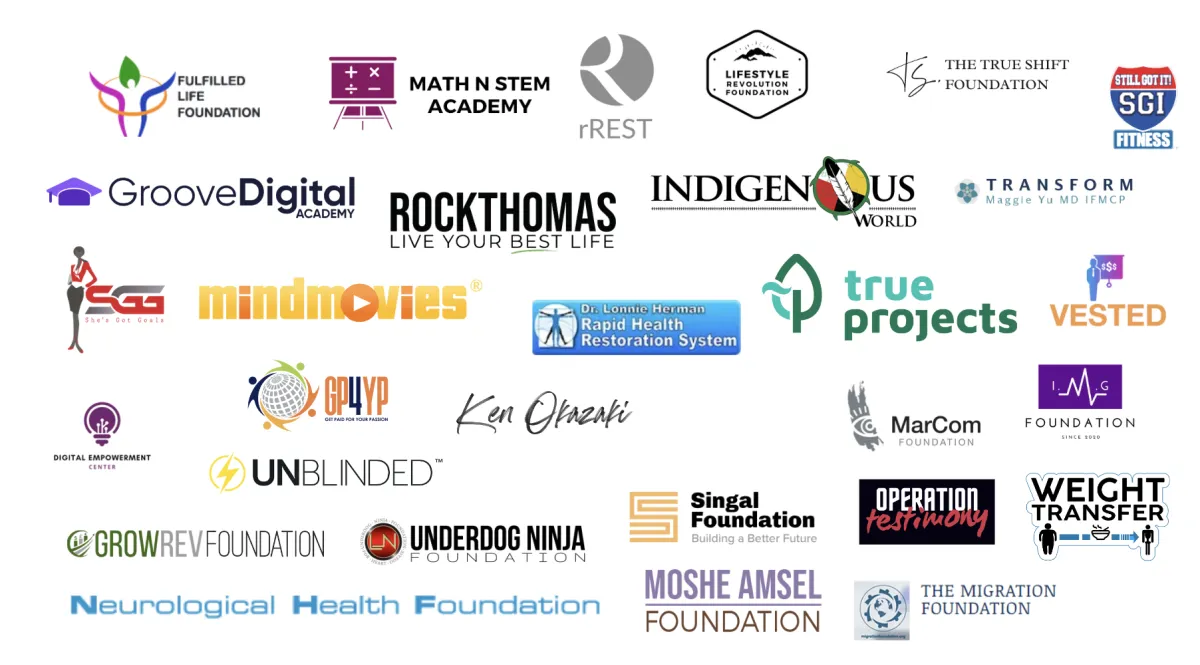
We've helped nonprofits in diverse industries unlock over $50 million in grants and funding

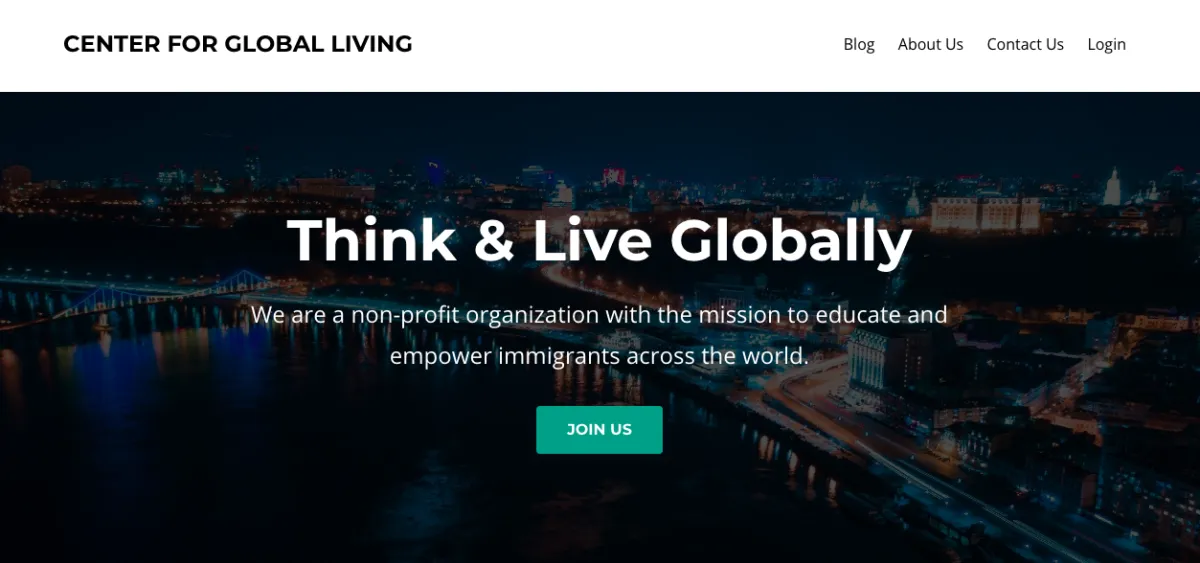

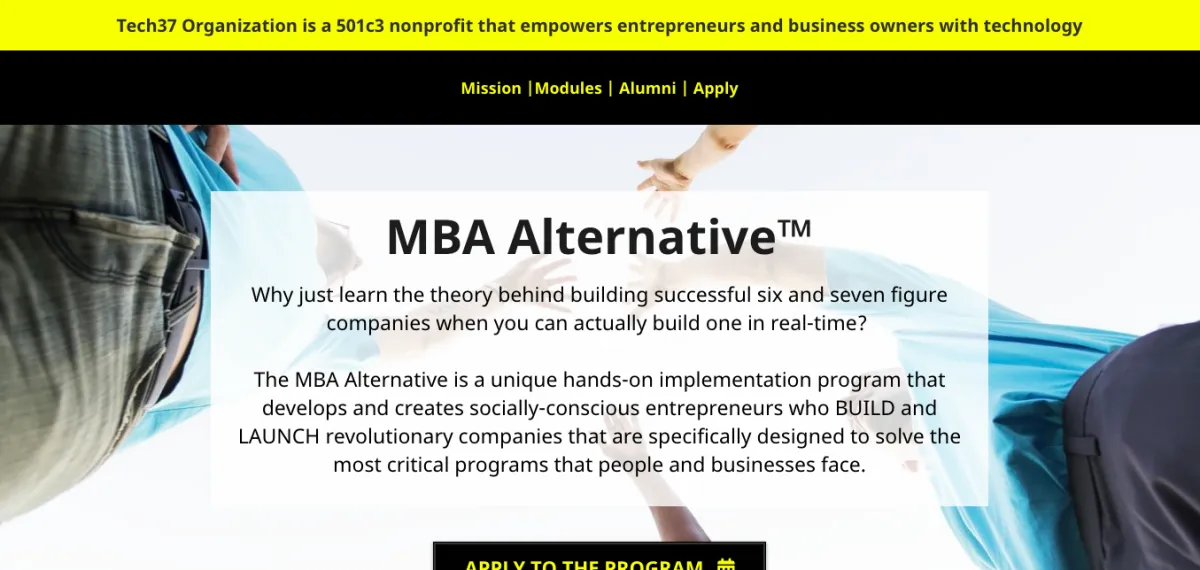

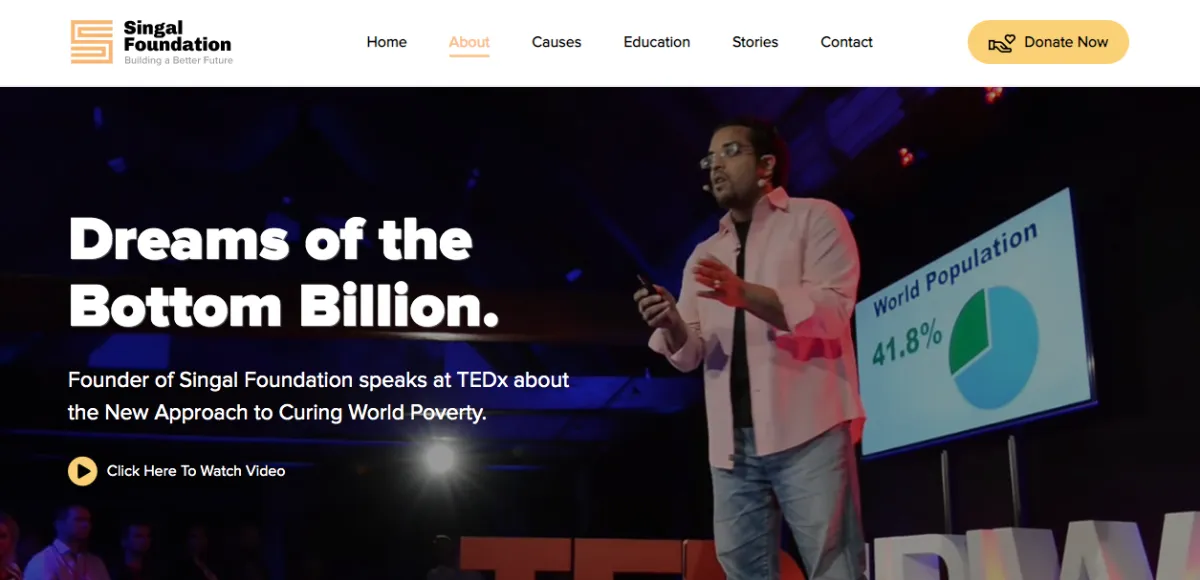
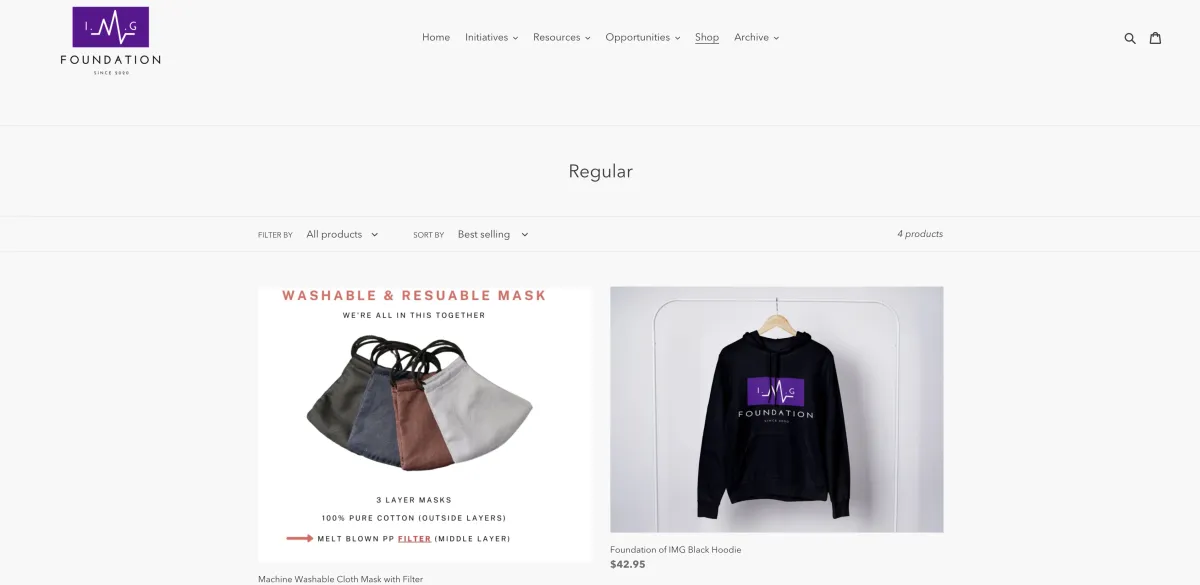
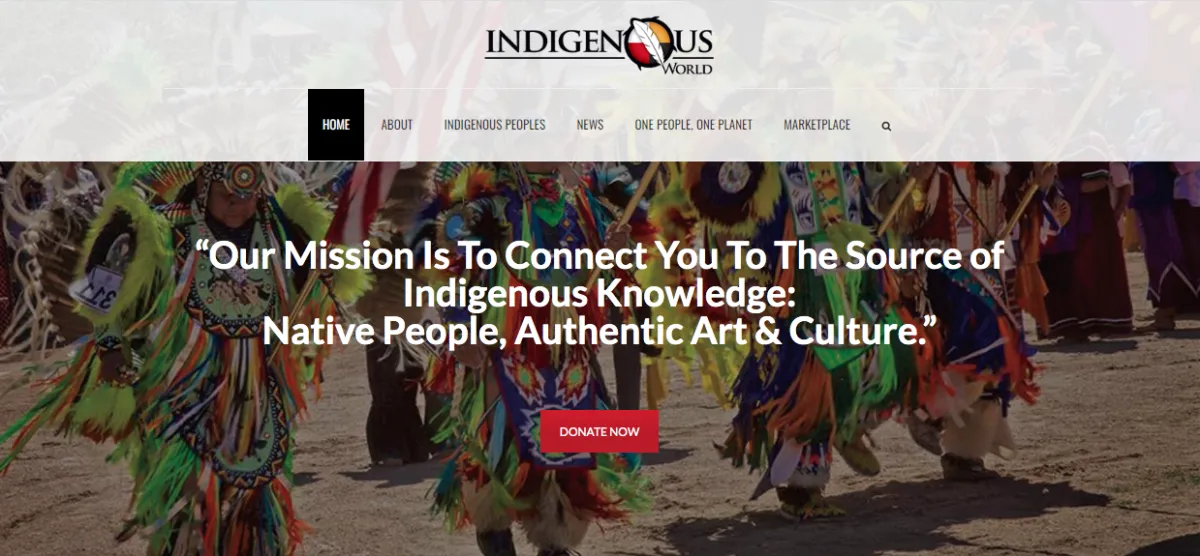




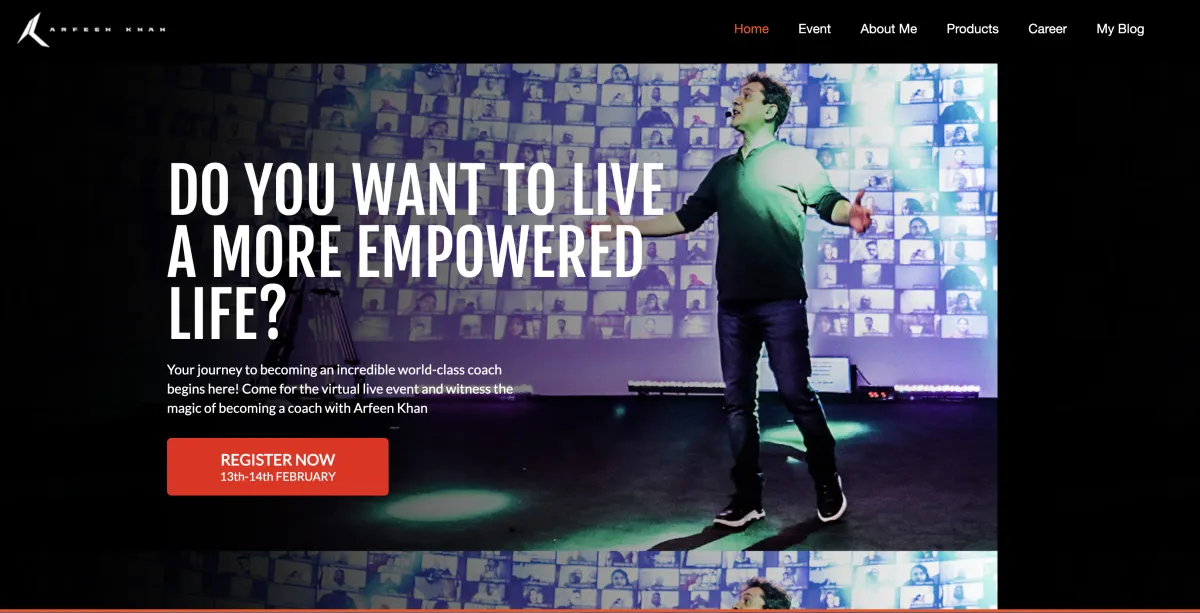
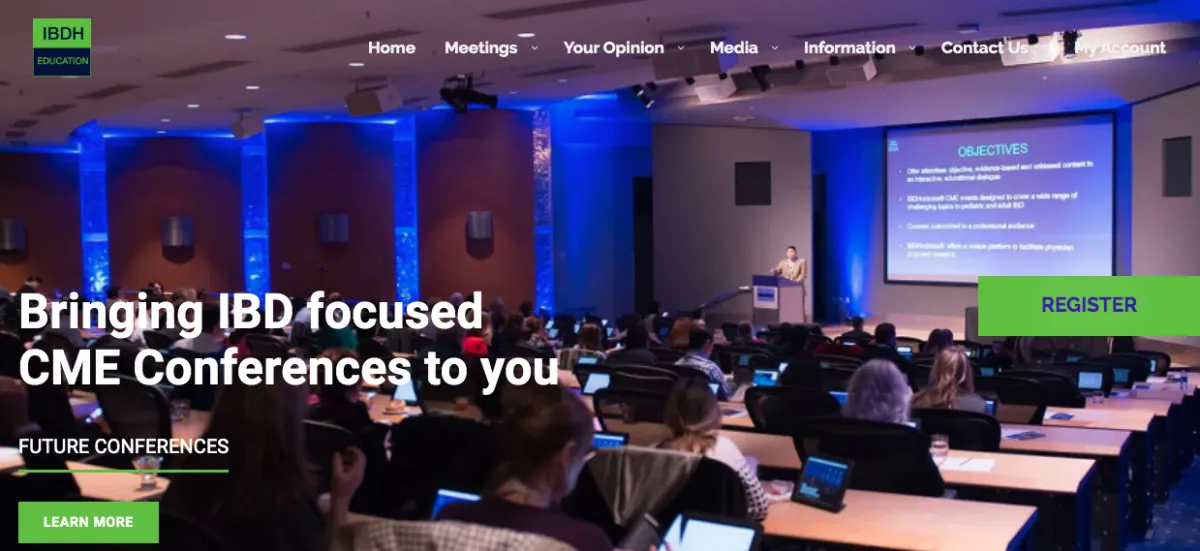










































Ready To Explore This Option? Get Started Below
Schedule A Call To Discuss The Power Of Nonprofits
DISCLAIMER: YOUR INFORMATION IS 100% SECURE & PROTECTED - WE WILL NOT RESELL IT, DISCLOSE IT, PUBLISH IT OR MISUSE IT FOR ANY PURPOSES WHATSOEVER UNLESS OTHERWISE AUTHORIZED BY YOU IN WRITTEN FORMAT - WE RESPECT YOUR RIGHTS & INFORMATION
SID PEDDINTI™ © Copyrighted Material - All Rights Reserved 2025
